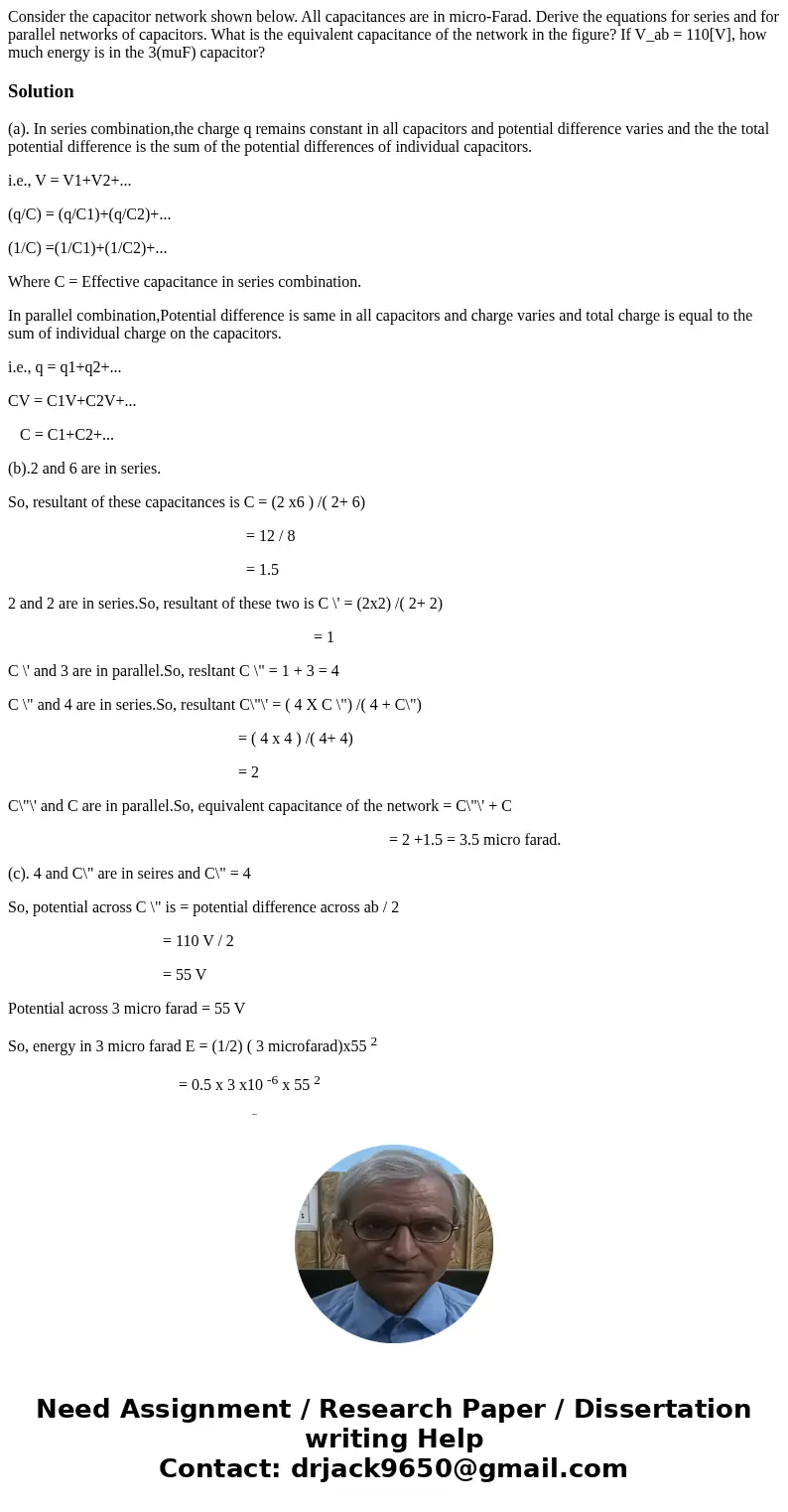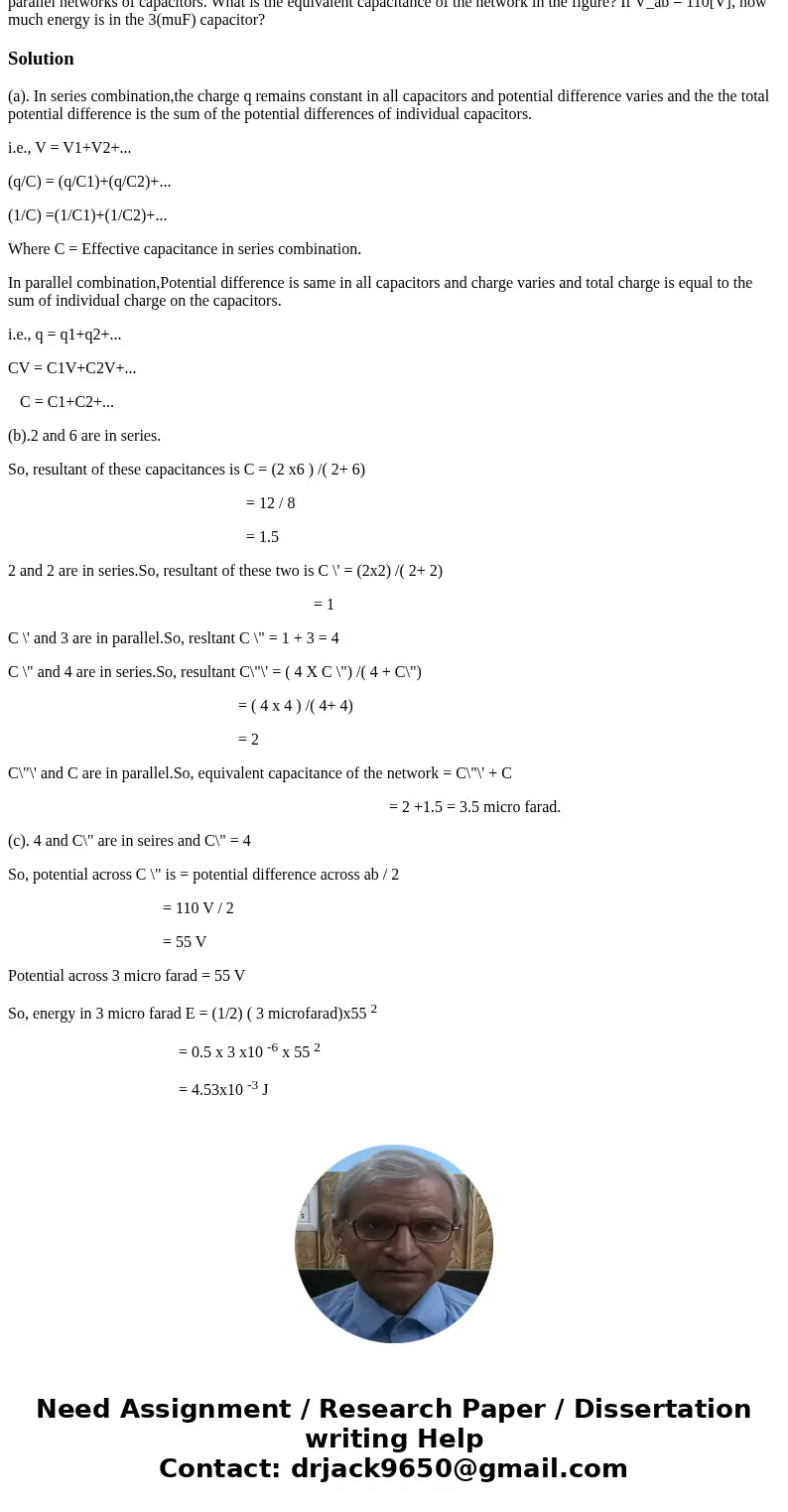Consider the capacitor network shown below All capacitances
Solution
(a). In series combination,the charge q remains constant in all capacitors and potential difference varies and the the total potential difference is the sum of the potential differences of individual capacitors.
i.e., V = V1+V2+...
(q/C) = (q/C1)+(q/C2)+...
(1/C) =(1/C1)+(1/C2)+...
Where C = Effective capacitance in series combination.
In parallel combination,Potential difference is same in all capacitors and charge varies and total charge is equal to the sum of individual charge on the capacitors.
i.e., q = q1+q2+...
CV = C1V+C2V+...
C = C1+C2+...
(b).2 and 6 are in series.
So, resultant of these capacitances is C = (2 x6 ) /( 2+ 6)
= 12 / 8
= 1.5
2 and 2 are in series.So, resultant of these two is C \' = (2x2) /( 2+ 2)
= 1
C \' and 3 are in parallel.So, resltant C \" = 1 + 3 = 4
C \" and 4 are in series.So, resultant C\"\' = ( 4 X C \") /( 4 + C\")
= ( 4 x 4 ) /( 4+ 4)
= 2
C\"\' and C are in parallel.So, equivalent capacitance of the network = C\"\' + C
= 2 +1.5 = 3.5 micro farad.
(c). 4 and C\" are in seires and C\" = 4
So, potential across C \" is = potential difference across ab / 2
= 110 V / 2
= 55 V
Potential across 3 micro farad = 55 V
So, energy in 3 micro farad E = (1/2) ( 3 microfarad)x55 2
= 0.5 x 3 x10 -6 x 55 2
= 4.53x10 -3 J


 Homework Sourse
Homework Sourse